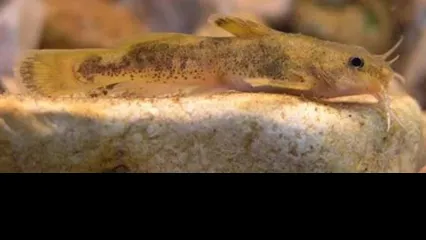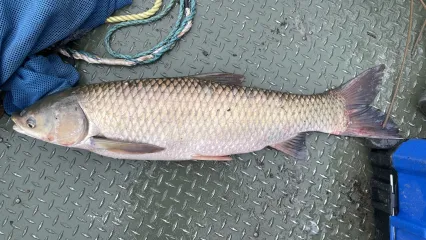
Description
For stream’s biologists, the flash of a male cardinal shiners’ red fins and belly during springtime sampling is a great sign; indicating a clean, healthy stream. In fact, this four-inch fish is considered one of the most intolerant fish species of poor water quality in our state. The vibrant red stripes of the male cardinal shiner are only seen during the fish’s breeding season, but are nonetheless responsible for the scientific name, Luxilus cardinalis. (“Cardinalis” is Latin for “red.”) In addition to their intense coloration, breeding males also develop “tubercles,” or bumps of skin, from the tip of the nose to the forehead – as seen in the above photo. These bumps help males maintain contact with females during spawning and may even aid in nest defense. Outside of the breeding season, males more closely resemble females when they fade to olive-brown. Both males and females have silver sides with a broad black stripe in the middle. Cardinal shiners are related to the similar appearing duskystripe shiner. The two species were thought to be the same fish until 1988.
Size
Up to 4 inches.
Habitat
This colorful fish is restricted to the Four State region of southwestern Missouri, northwestern Arkansas, eastern Kansas and northeastern Oklahoma. The Sooner State encompasses more than 25 percent of this species’ total range. Here, schools of cardinal shiners can be found in small streams and moderately large rivers. They are restricted to clear, gravel-bottomed streams in the Ozark Region and seem to prefer permanently flowing waters.
Life Cycle
The cardinal shiner eats aquatic plants, algae and aquatic and terrestrial insects. Spawning occurs in shallow riffles, usually in May.
How To Observe
These fish are best appreciated when spotted snorkeling.


